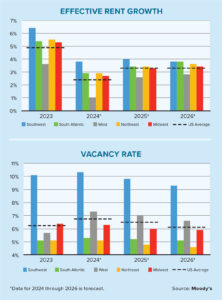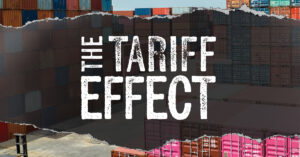In recent years, there has been a boom in the construction of multifamily housing complexes at the same time that the U.S. has experienced a lingering pandemic, a labor shortage and a faulty supply chain. Attorney Tyler Berding argues that this combination of factors will lead to high potential for trouble.
The speed with which rental housing is being built, along with shortages of materials and a lack of experienced labor, points to danger down the road as these structures begin to leak and degrade. Scotsman Guide spoke to Berding this past December about the reasons why he believes the commercial real estate and mortgage industries will see plenty of problems as a result of the current building boom.
What problems may develop due to the recent increase in new construction?
Well, we have had a shortage of skilled construction workers for decades now. This is also a time when developers and builders want to get product on the market as quickly as they can. So, they tend to overcommit to jobs that they can’t staff with crews that have the necessary skill sets. The workers don’t have the training to follow the building’s specifications the way that’s required to get the best waterproofing and to keep the building from deteriorating.
Obviously, there are some well-trained crews, but there’s not enough skilled labor to get these buildings built. A more recent issue is the ongoing supply chain problems. At times of high building demand, you can’t always get the building materials that you want. So, they may substitute with different and sometimes inferior materials that aren’t as waterproof.
I don’t have a lot of faith that we’ve learned our lesson on how to build quality buildings.
Why else do you think recently built multifamily properties will suffer from quality issues?
Multifamily housing is essentially where we see quality issues most often because most of them are low-rise, wood-frame buildings being built quickly. It doesn’t matter whether they are apartments or condominiums; they are built pretty much the same. If those buildings aren’t built correctly and waterproofed correctly, they will deteriorate. And a lot of the workers on these projects don’t necessarily know enough to make sure everything is sealed properly.
There also aren’t enough superintendents on the job and certainly not enough city building inspectors to make sure the joints and sections on a building are waterproofed correctly. That’s often what we find when we open up the walls to investigate why there is rot or other issues in a structure. These aren’t design defects. These are workmanship problems, and the workers either didn’t know how to do it right or weren’t willing to take the time to do it right.
What are you seeing in older buildings?
Older buildings can actually be worse because problems that were not caught earlier in the life of the building can exist there for sometimes decades, slowly rotting the framework or a balcony support or something like that. There can be a catastrophe or a collapse and somebody might be injured or killed. When we investigate problems in buildings, we often find structures that were not properly maintained during their life.
Why do you believe that the condominium model does not encourage long-term maintenance?
Unlike an apartment building or commercial tower, maintenance in a condominium is assessed on the owners of each unit. There can be a huge political pushback by owners against a board of directors for raising assessments at all, much less a special assessment for major repairs that can sometimes cost hundreds of thousands of dollars per unit. The owners have the authority to reject whatever the board recommends. So, there’s pressure on everyone to keep assessments as low as possible. The condo model basically allows voluntary funding of maintenance and repairs, and that’s simply the wrong way to keep a building safe for many decades.
What problems do you expect to see in the multifamily housing sector in the coming years?
My experience is that high demand flows into construction problems four or five years later. I’ve seen this cycle maybe four or five times in my career. This time, the high demand for new construction, coupled with the supply shortages and a lack of skilled labor, means we will most likely see serious problems in the next three or four years.
The high-rise buildings built with steel and glass will have fewer issues. But wood-frame buildings and reinforced concrete structures will begin to show problems in the next few years. I don’t have a lot of faith that we’ve learned our lesson on how to build quality buildings. I’m sure we are going to see the same problems we’ve seen for the past 30 or 40 years. It’s the same cycle coming around again. ●







